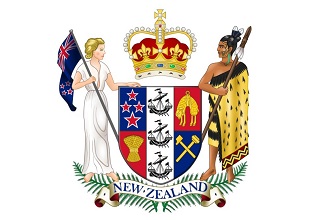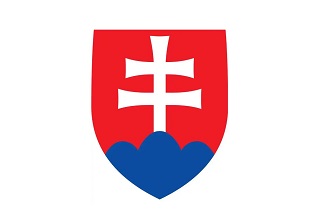Regarding the Inspection and Quarantine Requirements for persimmons from Tajikistan to China
1. Inspection and quarantine basis
(I) "Biosafety Law of the People's Republic of China";
(II) "Law of the People's Republic of China on Entry and Exit Animal and Plant Quarantine" and its implementing regulations;
(III) "Food Safety Law of the People's Republic of China" and its implementing regulations;
(IV) "Regulations on the Supervision and Administration of Inspection and Quarantine of Imported Fruits";
(V) "Protocol on Plant Quarantine Requirements for the Export of Fresh Persimmons from Tajikistan to China between the General Administration of Customs of the People's Republic of China and the Food Safety Committee of the Republic of Tajikistan".
2. Names of commodities allowed for entry
Fresh persimmon, scientific name Diospyros kaki, English name Persimmon.
3. Permitted origin
Persimmon producing areas in Tajikistan.
4. Approved orchards and packaging plants
Persimmon orchards and packaging plants exported to China should be reviewed and filed with the Food Safety Committee of the Republic of Tajikistan and approved for registration by the Chinese Customs. Registration information includes name, address and registration number, etc., so as to accurately trace the source when the exported goods do not comply with the relevant provisions of this announcement. Before the export season each year, the Tajikistan Food Safety Committee shall provide the Chinese Customs with a list of enterprises, which will be published on the Chinese Customs website after review and approval.
5. List of quarantine pests of concern
(1) Lobesia botrana
(2) Diaspidiotus perniciosus
(3) Lepidosaphes ulmi
6. Pre-export management
(I) Orchard management.
1. Orchards exported to China should establish a sound quality management system and traceability system under the supervision of the Tajikistan Food Safety Committee, implement good agricultural practices (GAP), maintain orchard sanitation conditions, and implement integrated pest management (IPM), including regular pest monitoring surveys, physical, chemical or biological pest control, and agricultural operations. Fallen fruits must not be mixed with commercial fruits during harvest.
2. The Tajikistan Food Safety Committee shall formulate a management plan for quarantine pests of concern to the Chinese Customs in accordance with the requirements of the International Standard for Phytosanitary Measures No. 6 (ISPM 6), and organize and implement orchard monitoring throughout the year. If pests or their corresponding symptoms are found during monitoring, integrated management measures including chemical, physical or biological control should be taken to control the density of pest populations or maintain a low prevalence level.
3. The monitoring and control of pests in orchards exported to China must be completed under the supervision and guidance of professional and technical personnel of the Tajikistan Food Safety Committee, and the technical personnel should receive training from the Tajikistan Food Safety Committee or its authorized institutions.
4. Orchards exported to China must keep records of orchard pest monitoring and control, and the Tajikistan Food Safety Committee shall provide them to the Chinese Customs upon request. The control records should include information such as the name, active ingredient, dosage and time of the chemical agents used during the growing season.
5. For Lobesia botrana, persimmons exported to China must come from non-pest production areas or orchards that implement systematic control measures. The Tajikistan Food Safety Committee shall establish pest-free production areas in accordance with the International Standard for Phytosanitary Measures No. 10 (ISPM 10), conduct pest monitoring in accordance with relevant requirements, and obtain approval from the Chinese Customs. If Lobesia botrana is found in the relevant pest-free production areas, the Tajikistan Food Safety Committee shall immediately suspend its status as a pest-free production area, notify the Chinese Customs within 48 hours, and activate the emergency plan. The pest-free production area can only be restored when the Tajikistan Food Safety Committee eradicates the epidemic and is approved by the Chinese Customs.
For orchards that implement systematic control measures, the Tajikistan Food Safety Committee or its authorized personnel shall conduct pest control in registered orchards through field surveys and trap monitoring from the flowering period to the harvest period of persimmons. The density of traps in the orchard is at least 2 per hectare, and they are checked at least once every two weeks. The Tajikistan Food Safety Committee shall provide monitoring reports to the Chinese Customs before the annual export season as required. Once Lobesia botrana is detected, the Tajikistan Food Safety Committee shall immediately notify the Chinese Customs and immediately suspend the export of persimmons from the relevant orchards and packaging plants to China. The Tajikistan Food Safety Committee must take effective eradication measures, and then the two sides will determine whether to resume imports.
6. For Diaspidiotus perniciosus and Lepidosaphes ulmi, the Tajikistan Food Safety Committee or its authorized personnel must conduct manual monitoring during the growth period of persimmons, conduct orchard surveys every 15 days, and focus on checking whether the above pests occur on branches, leaves, and fruits. If relevant pests or harmful symptoms are found, comprehensive management measures including chemical or biological control should be taken.
(II) Packaging plant management.
1. The processing, packaging, storage and shipping of persimmons exported to China must be carried out under the quarantine supervision of the Tajikistan Food Safety Committee or its authorized personnel. The packaging plant for persimmons exported to China should be clean and hygienic, with good sanitary conditions, hardened ground, measures to prevent reinfection of pests (such as insect-proof nets, etc.), and raw material fields and finished product warehouses.
2. During the packaging process, persimmons exported to China should be manually selected, graded and cleaned to remove diseased, worm-eaten, rotten, deformed fruits, branches and leaves or other plant residues and soil.
3. If the packaged persimmons need to be stored, they should be immediately put into storage and stored separately to avoid reinfection by pests.
4. Packaging plants exported to China should establish a traceability system to ensure that persimmons exported to China can be traced back to registered orchards, and record information such as processing and packaging date, source orchard name or its registration number, quantity, export date, export quantity, destination country, container number, etc.
(III) Packaging requirements.
1. The packaging materials for persimmons exported to China should be clean and unused, and meet China's relevant plant quarantine and hygiene requirements. If wooden packaging is used, it must comply with the requirements of International Standard for Phytosanitary Measures No. 15 (ISPM 15).
2. Each packaging box should be marked with information such as the name of the fruit, exporting country, place of origin, orchard and packaging plant name or registration number in Chinese or English. Each packing box and pallet must be marked in Chinese or English with "输往中华人民共和国" or "Exported to the People's Republic of China".
3. Containers for transporting Chinese persimmons must be inspected during packing to ensure good sanitary conditions. Containers should be sealed and their seals should be intact when arriving at the Chinese entry port.
(IV) Inspection and quarantine before export.
1. In the first two years of trade, the Tajikistan Food Safety Committee shall sample and inspect persimmons exported to China at a rate of 2% per batch of goods, with a minimum sampling volume of 1,200 fruits, and at least 60 of them and suspicious fruits found during the inspection process shall be dissected for inspection. If no plant quarantine problems occur within two years, the sampling rate will be reduced to 1%, but not less than 600 fruits.
2. If quarantine pests, branches, leaves or soil of concern to the Chinese Customs are found, the batch of goods shall not be exported to China, and the relevant orchards and packaging plants shall be suspended from exporting to China in this export season as appropriate. The Tajikistan Food Safety Committee shall find out the reasons and take corrective measures. At the same time, keep the records of seizure and provide them to the Chinese Customs upon request.
(V) Requirements for plant quarantine certificates.
1. For persimmons that have passed the quarantine, the Tajikistan Food Safety Committee shall issue a plant quarantine certificate in accordance with the International Standard for Phytosanitary Measures No. 12 (ISPM 12), indicating the name or registration number of the orchard and packaging plant, and indicate in the additional statement: "This consignment complies with requirements specified in the Protocol of Phytosanitary Requirements for Export of Fresh Persimmons from Tajikistan to China, and is free from the quarantine pests of concern to China."
2. Before the formal start of trade, the Tajikistan Food Safety Committee shall provide a sample of the plant quarantine certificate to the Chinese Customs for confirmation and filing.
7. Entry inspection and quarantine and unqualified treatment
When persimmons exported to China arrive at the Chinese entry port, the Chinese Customs shall implement inspection and quarantine in accordance with the following requirements.
(I) Verification of relevant certificates and labels.
1. Verify whether the imported fruit has obtained the "Entry Animal and Plant Quarantine Permit".
2. Check whether the plant quarantine certificate complies with the provisions of Article 6, paragraph (e) of this announcement.
3. Check whether the labels on the packaging boxes and pallets comply with the provisions of Article 6, paragraph (iii) of this announcement.
(ii) Entry inspection and quarantine.
1. Persimmons exported to China should enter the country from ports where Chinese customs allows the import of fruits.
2. According to relevant laws, administrative regulations, rules and regulations, persimmons exported to China shall be subject to inspection and quarantine. If they pass the inspection and quarantine, they shall be allowed to enter the country.
(iii) Disqualified treatment.
1. If it is found that the goods come from unapproved orchards or packaging plants, the batch of goods shall not be allowed to enter the country.
2. If live Lobesia botrana is found, the batch of goods shall be returned or destroyed. Chinese Customs will immediately notify the Tajikistan Food Safety Committee to suspend the export of persimmons from the relevant orchards and packaging plants to China. If they come from non-epidemic production areas, the status of the relevant non-epidemic production areas will be revoked. The Tajikistan Food Safety Committee should find out the reasons and implement corresponding improvement measures to avoid recurrence. China Customs will evaluate the improvement measures taken by the Tajikistan Food Safety Committee and decide whether to cancel the suspension of trade measures taken based on the evaluation results.
3. If other quarantine pests of concern to China Customs or newly recorded quarantine pests in Tajikistan are found, or soil, plant residues, etc. are found, the batch of goods will be returned, destroyed or quarantined.
4. If it is found that the goods do not meet the national food safety standards of China, the batch of goods will be returned or destroyed.
5. If the above-mentioned non-conformity is found, China Customs will immediately notify the Tajikistan Food Safety Committee and suspend the import of persimmons from relevant orchards and packaging plants as appropriate. The Tajikistan Food Safety Committee should find out the reasons for the non-conformity and take improvement measures to prevent similar situations from happening again. China Customs will decide whether to cancel the suspension measures based on the rectification results of the Tajikistan Food Safety Committee.
GACC
July 19, 2024
Pest Monitoring Requirements
The Food Safety Committee of Tajikistan shall take necessary monitoring measures to monitor Lobesia botrana and shall provide one year of monitoring records to the Chinese Customs before trade commences.
I. Pheromone trap monitoring
(I) Types of lures and traps.
Use Lobesia botrana special pheromone lures and place the lures in triangular traps or other traps approved by the Chinese Customs. The pheromone content in the lures shall not be less than 1 mg.
(II) Monitoring location.
Persimmon orchards, packaging plants, distribution points, cold storage areas, exit ports, etc.
(III) Hanging method.
Hang the trap in the middle and upper part of the host tree canopy, where it is not blocked by branches and leaves and where the sunlight is not strong. Pay attention to shading and avoid direct sunlight or rain.
(IV) Setting density.
For export persimmon orchards, at least 2 traps shall be placed per hectare.
1-3 traps shall be arranged for every 1 hectare in packaging plants, distribution points and exit ports.
(V) Replacement of lures.
Replace once a month.
(VI) Inspection cycle.
From the flowering period to the harvest period of persimmons, at least one inspection shall be carried out every 2 weeks.
(VII) Inspectors.
Tajikistan Food Safety Committee or its authorized technicians.
2. Yellow boards (yellow gel traps)
All registered orchards shall place yellow boards to trap and monitor pests. Trapping and monitoring shall last from the flowering period of persimmons to the end of the harvest period. The number of yellow boards hung in each orchard shall not be less than 4. When the area of the plantation is greater than 4 hectares, 1 yellow board shall be hung for every 0.8 hectares of area. During the production season, the yellow boards shall be inspected once a week; before harvesting, they shall be inspected twice a week. The yellow boards shall be replaced at least once every two weeks. If the surface of the yellow board is covered with plant residues, it shall be replaced in time.




